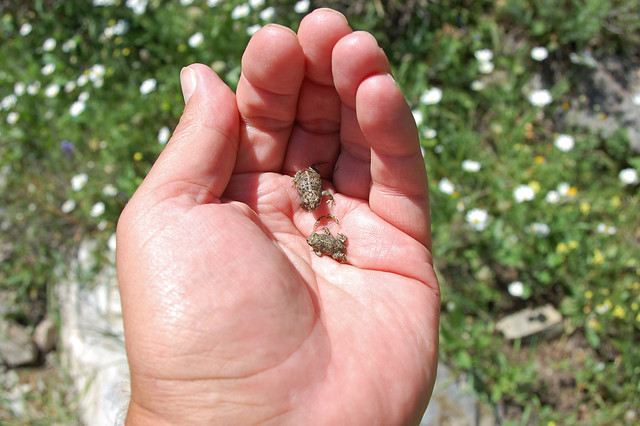The bulk of the photographs are from the area surrounding our temporary home near Alhaurin de la Torre in the province of Malaga. The garden was stony and overgrown, nearby were water meadows and rocky hillsides. The grounds surrounding the villa included a lemon grove on a steep, sunny bank.
Turkish Gecko (Hemidactylus turcicus), Moorish Gecko (Tarentola mauritanica), Large Psammodromus (Psammodromus algirus) and Iberian Worm Lizards (Blanus cinereus) were frequently seen either around the house or in the grounds.


Moorish Gecko (Tarentola mauritanica).


Juvenile Large Psammodromus (Psammodromus algirus)

Iberian Worm Lizard - (Blanus cinereus)

Blanus cinereus
A small nature reserve on the coast was visited often and rarely disappointed with something interesting to watch. The Horseshoe Whip Snakes (Hemorrhois hippocrepis) were the most frequently sighted snakes. All sizes could be seen basking among the rocks alongside the path – sometimes adults and juveniles together.

Horseshoe Whip Snake - (Hemorrhois hippocrepis)

Horseshoe Whip Snake (Hemorrhois hippocrepis)



Moorish Gecko (Tarentola mauritanica), many minus tails, could also be spotted between the crevices.
Montpellier snakes (Malpolon monspessulanus) were seen basking on exposed walls and earthworks.

Montpellier Snake - (Malpolon monspessulanus)
The numerous freshwater lakes on the reserve were a magnet to some interesting birdlife and during our many visits we managed to tick off Purple Gallinule, White-headed Duck, Audouins Gull, Curlew Sandpiper and Greater Flamingo.
In the sunshine the lake and river banks were dotted with Spanish Terrapins (Mauremys leprosa). They were also found wandering on the beach and one unfortunate individual was seen being rolled up and down the tideline by particularly angry looking waves.

Spanish Terrapin - (Mauremys leprosa)
A river running through the reserve washed all types of things up onto the beach. When the torrential winter rains began, walking along the beach took on a rather macabre turn as the bodies of drowned animals began to appear on the sand. Dogs, sheep and goats – also a horse complete with bridle. Thankfully we weren’t about when the body of a missing farm worker washed up here.

In early January the temperatures dropped away considerably, especially on the hills surrounding our village. One morning we sat in spot out of the chilly wind to watch two young lads on the far side of the valley searching around the low bushes. After half an hour one had clearly found the object they had been looking for and both then headed back to the village. Even through binoculars I couldn’t see what they had found. Jogging down from our vantage point we eventually caught up, finding them standing at the front door of one of the houses. The door was opened by a young lady who was then presented with their findings, a small chameleon. Clearly thrilled with her gift the young man got a hug. Seeing us watching nearby she waved us over to see her new ‘pet’.

The Gift.

























































